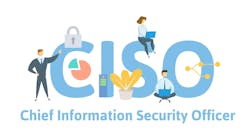LYNNFIELD, Mass. -- Sophos, a global leader in policy-based network security software for viruses and spam, has published a report revealing the top ten viruses and hoaxes that caused problems for businesses around the world during the month of January 2005.
The report, compiled from SophosLabs, a global network of research centers, showed that Zafi-D, which appeared at the end of 2004, maintained its position at the top of the chart for a second consecutive month.
The top ten viruses in January 2005 were as follows:
1. W32/Zafi-D 44.0% Second month at number one 2. W32/Netsky-P 19.4% 3. W32/Zafi-B 10.1% 4. W32/Sober-I 6.3% 5. W32/Netsky-D 3.2% 6. W32/Netsky-Z 3.1% 7. W32/Bagle-AA 2.1% 8. W32/Netsky-B 1.9% 9. W32/MyDoom-O 1.2% 10. W32/Netsky-C 1.1% Others 7.6%
"The Zafi-D worm managed to maintain the top position on the chart for the second consecutive month, accounting for nearly half of all reports in January 2005," said Gregg Mastoras, senior security analyst at Sophos, Inc. "Despite the holiday season being behind us, many continued to open the email perhaps thinking it was a belated holiday greeting."
"Netsky-P was still a pest to many users in January despite the fact that protection against this worm has been available since March 2004," continued Mastoras. "Many organizations are probably protected at this point, but for those who are still getting hit, they need to protect their gateway at all times with automatic virus updates."
Sophos analyzed and protected against 1,329 new viruses in January. The total number of viruses Sophos now protects against is 99,829. Sophos research shows that over 4.3%, or one in 23 emails, circulating during the month of January were viral. This figure is a little lower than last month when 1 in 18 emails were viral.
The top ten hoaxes reported to Sophos during January were as follows:
1. Hotmail hoax 31.7% Seventh consecutive month at number one 2. A virtual card for you 9.7% 3. Bonsai kitten 9.0% 4. Meninas da Playboy 8.2% 5. Yahoo instant message 3.8% 6. Letter from tsunami victim 3.3% New entry 7. Applebees Gift Certificate 2.5% 8. Budweiser frogs screensaver 2.1% 9. Unidentified tsunami boy 1.8% New entry 10. Bill Gates fortune 1.6% Others 26.3%
"There were two new entries to the hoax chart in January and both centered on the Indian Ocean tsunami disaster," continued Mastoras. "The 'unidentified tsunami boy' chain letter affected email systems due to sympathetic internet users who forwarded a picture of a young blonde-haired boy in a Thai hospital. The 'letter from tsunami victim' was nothing but a scam similar to the well- known Nigerian Letter scams, which were designed to extort money from email users. The best advice is to simply delete all such email and/or not forward."
Other virus news:
On January 28, 2005, Jeffrey Lee Parson, the teenage author of the Blaster-B internet worm was sentenced to 18 months in prison and 100 hours of community service by a US District Court. Parson's worm, which launched an attack against Microsoft's website and infected 48,000 computers caused an estimated $1.2 million in damage when it spread in August 2003.
Sophos has made available a free, constantly updated information feed for intranets and websites, which means users can always find out about the latest viruses and hoaxes: http://www.sophos.com/virusinfo/infofeed/

